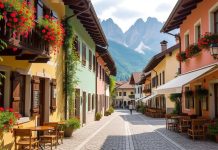Exploring the Wilds of Kobuk Valley National Park
Kobuk Valley National Park is a breathtaking expanse of pristine wilderness situated in the remote reaches of northwestern Alaska. Known for its rugged landscapes, rolling sand dunes, and abundant wildlife, Kobuk Valley offers an unparalleled opportunity for adventurers seeking solitude and stunning natural beauty. As one of the least visited national parks in the United States, it remains largely untouched, offering a unique experience for those willing to journey off the beaten path.
Getting to Kobuk Valley National Park
Travel Options and Challenges
Reaching Kobuk Valley National Park is a journey in itself, requiring careful planning and a sense of adventure. The park is not accessible by road, which means that visitors must rely on other means of transport to get there. The closest town is Kotzebue, which can be accessed by air from Anchorage. From Kotzebue, travelers can charter a bush plane to fly 75 miles east to the park.
Chartering a Bush Plane
Chartering a bush plane is the most common way to reach Kobuk Valley National Park. Several operators in Kotzebue offer flights to the park, such as Northwest Aviation and Ryan Air. It’s advisable to book your flight in advance, especially during the summer months when demand can be high. Flights are dependent on weather conditions, so be prepared for potential delays.
Seasonal Considerations
The best time to visit Kobuk Valley is during the summer months, from June to August, when the weather is more predictable, and temperatures are warmer. Winter visits are challenging due to extreme cold, limited daylight, and accessibility issues. Those who brave the cold winter conditions are rewarded with the surreal beauty of snowy landscapes and, occasionally, the aurora borealis.
Unveiling the Wonders of Kobuk Valley
The Great Kobuk Sand Dunes
One of the most unique features of Kobuk Valley National Park is the Great Kobuk Sand Dunes, which can rise up to 100 feet high and stretch over 25 square miles. These dunes are a remnant from the Pleistocene epoch and offer a surreal desert-like landscape juxtaposed against the surrounding tundra.
Exploring the Dunes
Visitors to the dunes can hike and explore the area, experiencing the stark contrasts between the sand dunes and the encircling boreal forest. Be sure to wear sturdy footwear, as the sand can be hot in the summer sun. The dunes are constantly shifting, making each visit a unique experience.
Discovering the Kobuk River
The Kobuk River meanders through the park, offering a lifeline to the diverse ecosystem. Canoeing and kayaking along the river provide unparalleled access to the heart of the park, where you can immerse yourself in tranquility and observe wildlife.
Fishing and Recreation
The clear, cold waters of the Kobuk River are home to various fish species, including sheefish and Arctic grayling, making it an excellent spot for fishing enthusiasts. Ensure you have the appropriate fishing licenses and follow local regulations.
Wildlife Viewing Opportunities
Kobuk Valley is a haven for wildlife lovers, offering a chance to spot animals in their natural habitat. The park is home to a variety of species, including caribou, grizzly bears, wolves, and moose. Birdwatchers will also find delight in observing the migratory birds that journey through the park each year.
Caribou Migration
One of the most spectacular sights in Kobuk Valley is the migration of the Western Arctic Caribou Herd. Each year, around 500,000 caribou travel vast distances between their winter grazing grounds and their summer calving areas, providing visitors with a dramatic and unforgettable wildlife experience.
Backcountry Camping and Hiking
Preparing for a Backcountry Adventure
Backcountry camping in Kobuk Valley National Park promises solitude and raw beauty. However, it requires thorough preparation and respect for the environment. There are no designated campsites, so campers must practice Leave No Trace principles to minimize their impact on the land.
Gear Checklist
Make sure to pack appropriately for backcountry camping. Essential items include a reliable tent, sleeping bag rated for cool temperatures, cooking equipment, sufficient food and water, and outdoor clothing suitable for changing weather conditions. Maps and a compass or GPS device are also crucial for navigation, as cell service is nonexistent in the park.
Must-Try Trails and Routes
While there are no marked trails in Kobuk Valley, several routes are popular among visitors. Hiking the sand dunes provides a challenging yet rewarding trek, with panoramic views of the valley and surrounding mountain ranges. The Onion Portage area, located along the Kobuk River, offers significant historical and cultural insights into the region.
Understanding the Cultural and Historical Significance
Insights into Indigenous Heritage
The land that encompasses Kobuk Valley National Park holds great cultural significance for the Inupiat people, who have lived in the region for thousands of years. The Onion Portage site, in particular, has been an important hunting ground for caribou and a gathering site for indigenous communities.
Cultural Engagement
Visitors are encouraged to respect and honor the cultural heritage of the Inupiat people. Engaging with local communities in Kotzebue or participating in guided cultural tours can provide valuable insights into the rich tapestry of traditions and history in the Kobuk Valley region.
Safety Tips for an Unforgettable Visit
Navigating the Wilderness Safely
Kobuk Valley’s remote and rugged terrain requires visitors to prioritize safety. Awareness and preparation are key to ensuring a memorable and safe experience in the park. The wilderness can be unforgiving, so take the time to understand the potential hazards and how to mitigate them.
Bear Safety
Grizzly bears are residents of Kobuk Valley, and encountering one is a possibility. To ensure safety, store food and scented items in bear-proof containers and follow best practices for bear encounters. Making noise while hiking and traveling in groups can reduce the likelihood of surprising a bear.
Weather Considerations
Weather in Kobuk Valley can change rapidly. Be prepared for fluctuating temperatures, sudden rain, or snow, especially in the shoulder seasons. It’s important to check the local weather forecast before setting out on your adventure and to carry appropriate clothing for all conditions.
Immersing in the Serenity of the Wilderness
Photo Opportunities and Scenery
With its expansive vistas, pristine rivers, and dynamic sand dunes, Kobuk Valley National Park is a photographer’s dream. The interplay of light and shadow across the landscape creates endless opportunities for capturing striking images.
Capturing the Marvels
Whether you’re an amateur photographer with a smartphone or a seasoned professional with a DSLR, take time to appreciate the beauty of the land. Early morning and late evening light offer some of the best photographic moments.
Experience the Solitude
One of the greatest gifts Kobuk Valley offers is solitude. With minimal human presence, the park allows visitors to disconnect from their busy lives and reconnect with nature. Embrace the silence and tranquility, and take a moment to simply exist in this magnificent wilderness.
Kobuk Valley National Park is more than just a destination; it is an experience that tests the limits of adventure and rewards with unforgettable memories. Whether you’re hiking the great sand dunes, paddling the serene waters of the Kobuk River, or witnessing the awe-inspiring caribou migration, this corner of the world offers a glimpse into the wild heart of Alaska.































